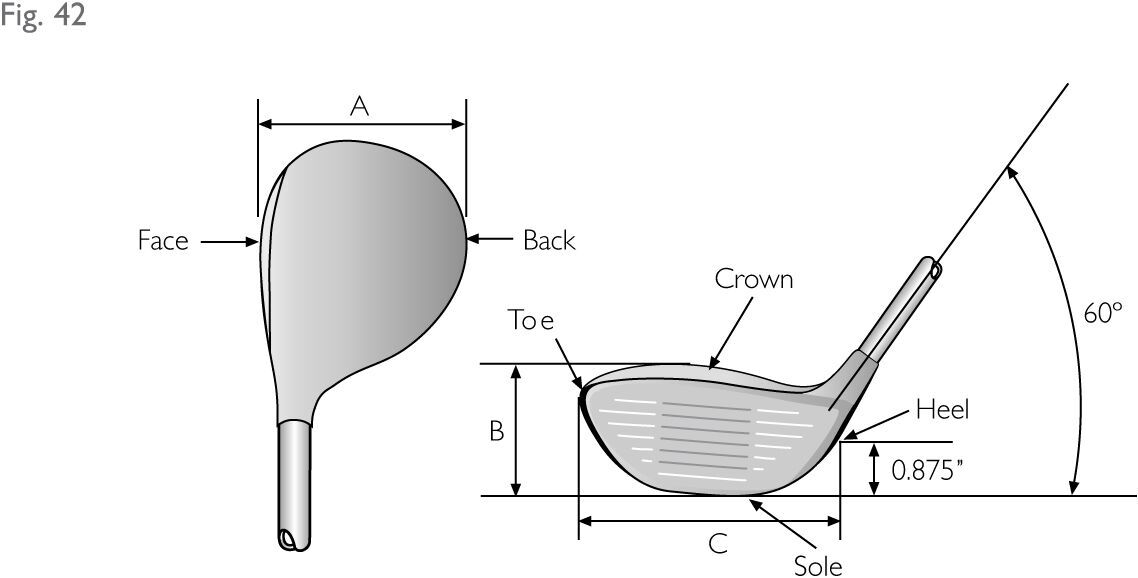b. Dimensions, Volume and Moment of Inertia
(i) Woods
Dimensional specifications:
When the club is in a 60 degree lie angle, the dimensions of the clubhead must be such that:
-
the distance from the heel to the toe of the clubhead is greater than the distance from the face to the back;
-
the distance from the heel to the toe of the clubhead is not greater than 5 inches (127 mm); and
-
the distance from the sole to the crown of the clubhead, including any permitted features, is not greater than 2.8 inches (71.12 mm).
These dimensions are measured on horizontal lines between vertical projections of the outermost points of:
-
the heel and the toe; and
-
the face and the back (see Fig. 42, dimension A); and on vertical lines between the horizontal projections of the outermost points of the sole and the crown (see Fig. 42, dimension B). If the outermost point of the heel is not clearly defined, it is deemed to be 0.875 inches (22.23 mm) above the horizontal plane on which the club is lying (see Fig. 42, dimension C).

Volume limit:
The volume of the clubhead must not exceed 460 cubic centimetres (28.06 cubic inches), plus a tolerance of 10 cubic centimetres (0.61 cubic inches).
Moment of Inertia (MOI):
When the club is in a 60 degree lie angle, the moment of inertia component around the vertical axis through the clubhead’s centre of gravity must not exceed 5900 g cm2 (32.259 oz in2), plus a test tolerance of 100 g cm2 (0.547 oz in2).
(ii) Irons
When the clubhead is in its normal address position, the dimensions of the head must be such that the distance from the heel to the toe is greater than the distance from the face to the back.
(iii) Putters (see Fig. 44)
When the clubhead is in its normal address position, the dimensions of the head must be such that:
-
the distance from the heel to the toe is greater than the distance from the face to the back;
-
the distance from the heel to the toe of the head is less than or equal to 7 inches (177.8 mm);
-
the distance from the heel to the toe of the face is greater than or equal to two thirds of the distance from the face to the back of the head;
-
the distance from the heel to the toe of the face is greater than or equal to half of the distance from the heel to the toe of the head; and
-
the distance from the sole to the top of the head, including any permitted features, is less than or equal to 2.5 inches (63.5 mm).
For traditionally shaped heads, these dimensions will be measured on horizontal lines between vertical projections of the outermost points of:
-
the heel and the toe of the head;
-
the heel and the toe of the face; and
-
the face and the back;
and on vertical lines between the horizontal projections of the outermost points of the sole and the top of the head.
For unusually shaped heads, the toe to heel dimension may be made at the face.
